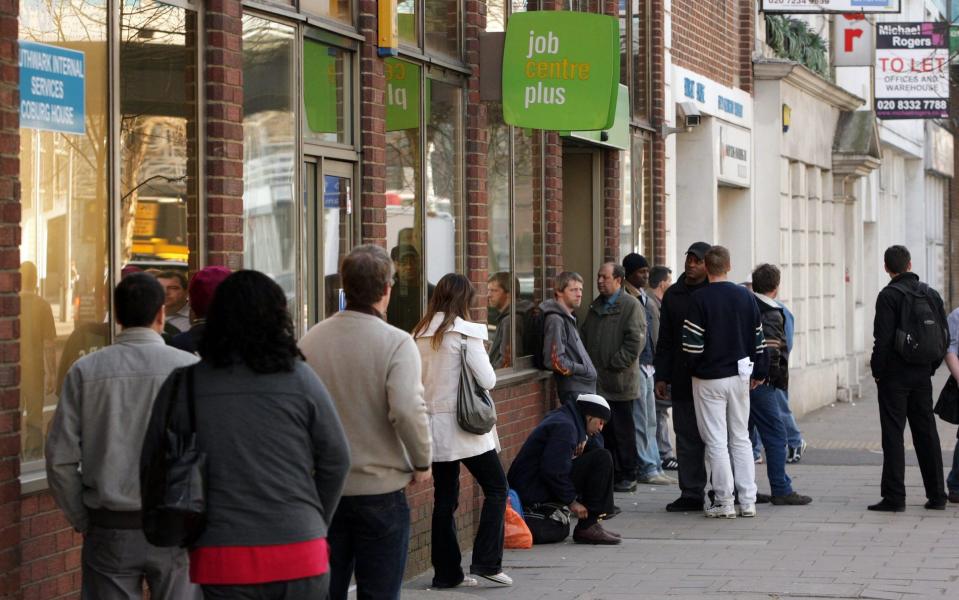Jobs disaster looms with long-term unemployment set to top 1.6m

A record jobs disaster could be on the way as long-term unemployment is set to hit a record 1.6m next year, if the second wave of Covid crushes the recovery.
The youngest and oldest workers are at particular risk of falling out of work for 12 months or more, potentially for many years to come, the Learning and Work Institute has warned.
More than 1m could still be in this category by the middle of the decade, with dire implications for families and the wider economy.
“It scars individuals, families, and communities for years to come. It lessens the chances of finding work and significantly reduces income in future years,” said the think tank.
“It demotivates people, undermines their skills, and can lead to health problems, especially mental health.”
This would be a problem not seen at scale for decades.
Long-term unemployment fell to below 300,000 earlier this year, or less than 1pc of the workforce - a record low.
Rising to 1.6m would push it up to almost one worker in 20, a record high on Office for National Statistics data going back to the early 1990s.
It is a stark turnaround from the jobs miracle of recent years. At the start of the year Britain’s unemployment rate was down at levels not seen since the mid-1970s, but could now face severe and lasting unemployment of the type suffered in the worst parts of the 1980s and 1990s.
Even in the aftermath of the financial crisis, long-term unemployment never reached the 1m-mark.
If the pattern of previous recessions is repeated, the Learning and Work Institute expects workers in the manufacturing, construction, retail and wholesale industries to be worst affected, with lower-skilled staff most vulnerable.

By region, those in London, Merseyside, South Yorkshire and the West Midlands are most at risk.
The youngest workers are typically vulnerable because they have little or no experience of work, and can end up locked out of starting their careers for years. Up to 290,000 under-25s could end up long-term unemployed.
Meanwhile workers aged over 65 are more vulnerable to the coronavirus, and have so far proven vulnerable to job losses.
“Long-term unemployment is poised to rise sharply next year, and could reach its highestvlevels since the 1990s. We know that long-term unemployment can have corrosive impacts on individuals and on communities,” said Stephen Evans, chief executive of the Institute.
“The clock is ticking: unless we act now, there won’t be enough time to get help in place. This needs a national effort, with government, local government and employers working together to help people get back to work.”

He fears job centres will be overwhelmed with claimants if the system is not beefed up.
“The Government’s Plan for Jobs included a welcome increase in Jobcentre Plus staff and the new Job Support Scheme aims to help protect jobs in the hardest-hit sectors. However, the new research finds these will not be enough to prevent a huge rise in the numbers of people unable to find work,” the Institute said.
The furlough scheme has helped keep people in work even if it may later turn out their jobs are no longer viable, effectively meaning there is a degree of “disguised” unemployment already.
The numbers of long-term unemployed will really begin to climb in April, as those who lost their jobs or failed to find work at the start of the pandemic tick up 12 months out of employment. As many as 225,000 could join the ranks of long-term jobless in that month alone.
This will pose a serious challenge to those trying to help people back into work.
The Institute proposes pumping more resources into a system that can offer flexible, local and personalised help through advisers to try to bring down unemployment as quickly as possible.

